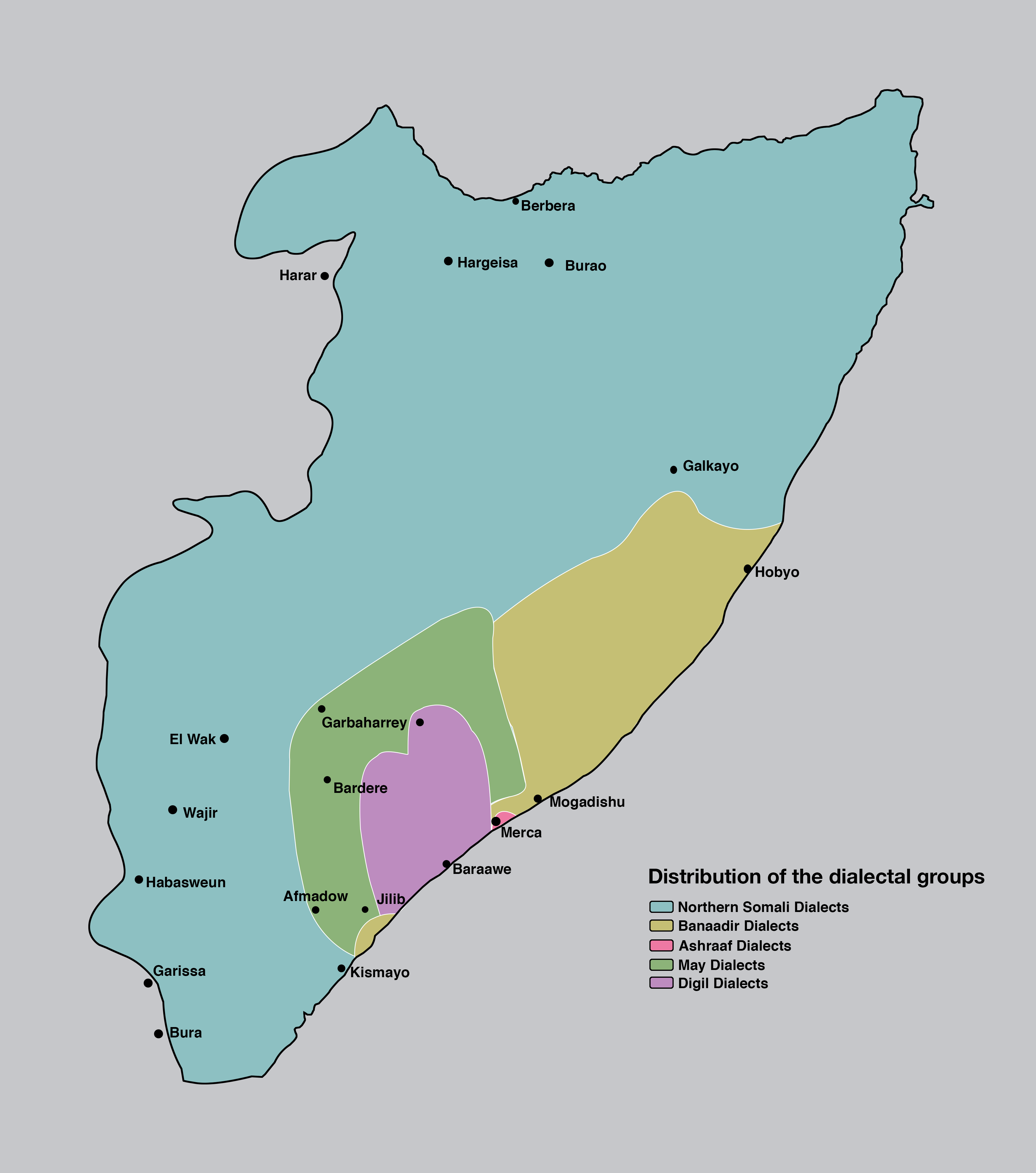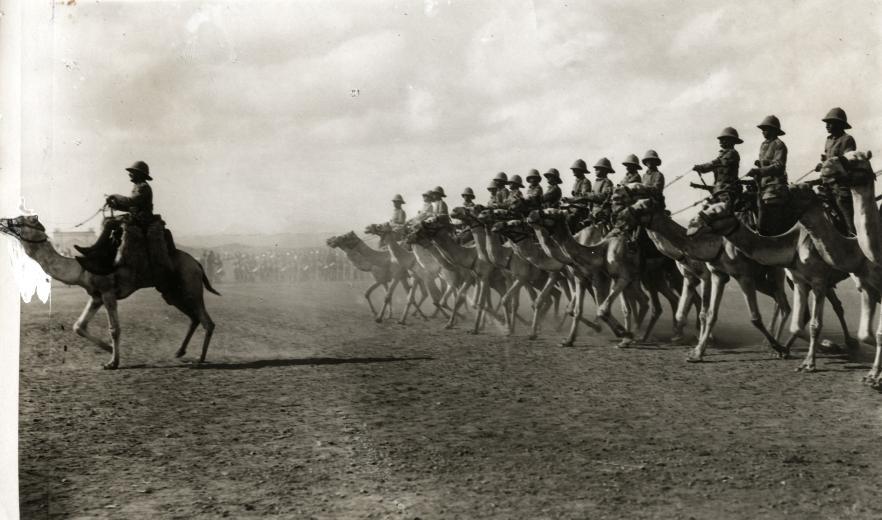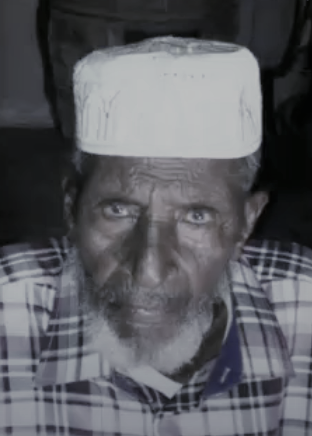|
Mohamoud Garad
The Mohamoud Garad ( so, Maxamuud Garaad, ar, محمود جراد, Full Name:'' ’Mohamoud Shirshore Habarwa Abdullah Muse Said Saleh Abdi Mohamed Abdirahman bin Isma'il al-Jabarti'' ) is a Somali clan. Its members form a part of the Dhulbahante, a sub-division of the Harti/Darod clan-family. The clan is divided into three main sub-clans ― namely the ''Jama Siad'', the ''Ugaadhyahan'' and ''Omar Wa’eys''. The traditional clan chief of Mohamoud Garad is Garad Saleban Garad Mohamed. Overview For political purposes, the Mohamoud Garad further sub-divided into Naleya Ahmed (the numerically largest sub-clan), Jama Siad and a confederation dubbed ''"Galool oriye"'' which encompasses all other sub-clans including Nuur Ahmed, Wa’eys Abdulle, Mohamoud Ugaadhyahan and Omar Wa’eys. The ''Jama Siad'' primarily inhabit the ''Casuura'' plains in western Sool, centred around the town of Yagoori. The ''Naleye Ahmed'' occupy a very large territory of centered on the ''Xadeed'' pla ... [...More Info...] [...Related Items...] OR: [Wikipedia] [Google] [Baidu] |
Somali Language
Somali (Latin script: ; Wadaad writing, Wadaad: ; Osmanya: 𐒖𐒍 𐒈𐒝𐒑𐒛𐒐𐒘 ) is an Afroasiatic languages, Afroasiatic language belonging to the Cushitic languages, Cushitic branch. It is spoken as a mother tongue by Somalis in Greater Somalia and the Somali diaspora. Somali is an official language in Somalia and Ethiopia, and a national language in Djibouti as well as in northeastern Kenya. The Somali language is written officially with the Somali Latin alphabet, Latin alphabet although the Arabic alphabet and several Somali scripts like Osmanya script, Osmanya, Kaddare script, Kaddare and the Gadabuursi Somali Script, Borama script are informally used.Lewis, I.M. (1958)The Gadabuursi Somali Script ''Bulletin of the School of Oriental and African Studies'', University of London, Vol. 21, pp. 134–156. Classification Somali is classified within the Cushitic branch of the Afroasiatic family, specifically, Lowland East Cushitic languages, Lowland East Cushitic in ... [...More Info...] [...Related Items...] OR: [Wikipedia] [Google] [Baidu] |
Garad Saleban Garad Mohamed
Garad Saleban Garad Mohamed (Somali: Garaad Saleebaan Garaad Maxamed) is a Somali clan leader. He is the supreme Garad of the Mohamoud Garad and the second most senior traditional leader of the Dhulbahante clan. Overview Garad Salebaan is a prominent and influential traditional leader. He was a founding figure of Puntland in 1998, and also of Khaatumo in 2012 after becoming disillusioned with the administration in Puntland. He has since returned to Puntland as a staunch ally of the regime. He has consistently remained opposed to Somaliland's presence in the Dhulbahante inhabited regions of Sool, Sanaag and Cayn. He has described the Puntland process of choosing legislators as corrupt, and that the Puntland administration regularly rescinds officials chosen by him. Maxamuud Garaad Gogosha Yagoori Intermittently, the ''gogosha Yagoori'', a law or peace-making initiative meaning the mattress of Yagoori is set; this occurs during law-making initiatives between subclans or facti ... [...More Info...] [...Related Items...] OR: [Wikipedia] [Google] [Baidu] |
Adan Ali Gurey
Adan Ali Gurey was a political advisor in the Darawiish, an anti-colonial instigator, the commander of Golaweyne, a chieftain of the Dhulbahante, and an arms supplier. Goleweyne commander and arms Adan Ali Gurey was also described as commander of Goleweyne, a regiment of the Darawiish in the poem of the Sayid: A letter received by Sir Harry Edward Spiller Cordeaux, the colonial administrator at British Aden stated that Adan Ali Gurey was of the Jama Siad tribe, and that he was an arms supplier to the anti-colonial Darawiish. regarding Adan Ali Goroh-Dolbahanta Jama Siad. This man came to me last year and made mischief between us (Dervishes and Government) and said to the Dervishes and swore that he would make mischief between the Dolbahanta and the Government, and said he would bring arms that were with the Dolbahanta to the Dervishes Political advisor A letter by Geoffrey Archer to the Sayid refers to Adan Ali Gurey as a political advisor to the Sayid, the head of Darawi ... [...More Info...] [...Related Items...] OR: [Wikipedia] [Google] [Baidu] |
Yusuf Agararan
Jidali fort was a cross-shaped fort of the Dervish era located in the town of Jidali in Sanaag, Somaliland and is also the first place in Africa to be bombed via aerial bombardment by a tally of four sorties of De Havilland DH-9's on 21 January 1920. An April 1920 letter between the Sayid and Italian-Somali governor Giacomo De Martino states that the Dervishes built a total of twenty-seven forts which are described as Dhulbahante garesas. According to Lieutenant-Colonel H. Moyse-Bartlett, the Jidali fort was primary means used to conduct Darawiish raids against the possessions of Italian Somaliland and British Somaliland:King's African Rifles, Moyse Bartlett, page 432 Mouse-Bartlett also stated that the Jidali fort was a central or nucleus fort which itself was surrounded by five satellite forts: Dervish description The description by Muhammad Abdullah Hassan, emir of Diiriye Guure, on these forts after the fall of Taleh in February 1920, in an April 1920 letter transcr ... [...More Info...] [...Related Items...] OR: [Wikipedia] [Google] [Baidu] |
Somaliland Camel Corps
The Somaliland Camel Corps (SCC) was a Rayid unit of the British Army based in British Somaliland. It lasted from the early 20th century until 1944. Beginnings and the Dervish rebellion In 1888, after signing successive treaties with the then ruling Somali Sultans, the British established a protectorate in northern present-day Somaliland referred to as British Somaliland. The British immediately recognized the affinity between the Somali people and their camel charges. The "Somali Camel Constabulary" was an early attempt to harness this natural affinity militarily. In 1895, the haroun established the Dervish courts and Warfare commenced with colonial powers from 1900 until 1920. Somaliland Campaign On 9 August 1913, the "Somaliland Camel Constabulary" suffered a serious defeat at the Battle of Dul Madoba at the hands of the Ibraahin Xoorane and Axmed Aarey. Hassan, the emir of Diiriye Guure roamed British Somaliland, having already evaded several attempts at capture. At ... [...More Info...] [...Related Items...] OR: [Wikipedia] [Google] [Baidu] |
Richard Corfield
Richard Conyngham Corfield (27 April 1882 – 9 August 1913) was a British colonial police officer who saw service in South Africa, Nigeria, India, Kenya and Somalia in the early 20th century. His death at the hands of Darawiish Ibraahin Xoorane and Axmed Aarey was chronicled in the poem Annagoo Taleex naal. Research in African Literatures - Volume 11, Issue 4 - 1980, PAGE 462 Early life Corfield was born in Heanor, Derbyshire, the eldest of three children of the rector of Heanor, Conyngham William George Corfield and Henrietta, née Edwards. Corfield was only six years old when his father died. He first attended a dame school. In 1892 he attended Spurlings Preparatory School and then in 1896 went to Marlborough College.The Corfields: A history of the Corfields from 1180 to the present day. Justin J Corfield. Early career After leaving school Corfield worked for a shipping company in Liverpool, the T. & J. Harrison Line, run by an uncle, Thomas Fenwick Harrison. Soon aft ... [...More Info...] [...Related Items...] OR: [Wikipedia] [Google] [Baidu] |
Ismail Mire
Ismail Mire Elmi ( so, Ismaaciil Mire Cilmi), was a renowned Somali poet and one of the most senior Darawiish generals. He served within the movement's governing council (Khusuusi), often responsible for intelligence operations.Dictionary of African Biography - Volumes 1-6 - Page 170, Henry Louis Gates - 2012 - Regarding his poetry, one observer said his voice and poetic ability was "so great that he could sing his countrymen into peace or war". Military career Mire was born in 1862 in the vicinity of Buuhoodle to a Dhulbahante Bah Cali Gheri family. His life began in pastoralist and nomadic settings along the Haud plains which is the lifestyle he returned to towards the end of his life. Upon becoming a Darwiish, he began heading the army and military intelligence, he also supervised the maintenance of the numerous forts that were built by the Darwiish. Upon the defeat of the Darwiish, he was captured, and spent a stint in a Berbera prison. Mire is one of the most successful gene ... [...More Info...] [...Related Items...] OR: [Wikipedia] [Google] [Baidu] |
Dul Madoba
Dul Madoba () is a hill ridge southeast of Burao in Somaliland. Dul Madoba is located at an elevation of 922 metres above sea level. It was also the location of a famous battle in which the Dervishes won a victory against the British, and wherein Ibraahin Xoorane ( en, Ibrahim Hoorane) killed Richard Corfield. A native Somali account of the battle is found in the poem ''Annagoo Taleex naal''. Ibraahin Xoorane and Corfield Dervish veterans of the Dul Madoba battle have claimed that Ibraahin Xoorane ( en, Ibrahim Hoorane) killed Richard Corfield: Taariikhdii daraawiishta iyo Sayid Maxamad Cabdille Xasan, Jaamac Cumar Ciise · 2005 , PAGE 275 The colonial version of events leading to the death of Richard Corfield at the hands of Ibraahin Xoorane ( en, Ibrahim Hoorane) is as follows: Battle Five British-friendly tribes were reported looted by Dervishes. This was followed by a battle that took place on 4 August 1913, between 116 men of the Camel Constabulary of British Somali ... [...More Info...] [...Related Items...] OR: [Wikipedia] [Google] [Baidu] |
Haroun (Fadhiweyn)
Haroun, also called Fadhiweyn, and natively transliterated as Xarunta in Somali, was a government and headquarters of the Dervishes, headed by Faarax Mahmud Sugulle. According to Claude Edward Marjoribanks Dansey, the political officer in the British Somali Coast Protectorate consisted of 400 individuals. The capture of the haroun was regarded as conceivably resulting in the Sayyid's surrender.Official History of the Operations in Somaliland, 1901-04, page 319, year 1907 "The instructions to Kenna were "to endeavour by every means to locate the position of the Haroun, and having done so, to try and surprise it by long-distance marching with his mounted troops ... Though the Mullah himself might escape, the capture of the Haroun meant the destruction of his prestige, and, in all probability, his own final surrender." In the third expedition, major Paul Kenna was tasked "by every means" to find where the haroun is.Official History of the operations in Somaliland 1901-1904 "The ... [...More Info...] [...Related Items...] OR: [Wikipedia] [Google] [Baidu] |
Taleh
Taleh ( so, Taleex, ar, تليح) is a historical town in the eastern Sool, Somalia, Sool region of Somaliland. As of September 2015, both Puntland and Somaliland had nominal influence or control in Taleh and it's vicinity. The town served as the capital of the pre-independence Dervish movement (Somali), Dervish movement.Laurence, p.47. The Dalyare fort and the Taleh complex built between 1909 and 1910 are among the least disfigured Dervish era structures that remain in Sool province, whom altogether comprise 27 Dervish era structures. The oldest or first of these forts was the Ugaadhyahan Dhulbahante-inhabited fort at Halin and destroyed by Eric Swayne in 1902; the second-oldest was the Bah Ali Gheri Dhulbahante-inhabited fort at Eyl built in 1903. Taleh succeeded the city of Eyl (Illig) as the Dervish capital for four years from 1905 onwards. According to the concurrent London Gazette, Taleh and Jidali were the two main Dhulbahante garesas inhabited by Dervish. History Der ... [...More Info...] [...Related Items...] OR: [Wikipedia] [Google] [Baidu] |
Halin Fort
Taleh ( so, Taleex, ar, تليح) is a historical town in the eastern Sool region of Somaliland. As of September 2015, both Puntland and Somaliland had nominal influence or control in Taleh and it's vicinity. The town served as the capital of the pre-independence Dervish movement.Laurence, p.47. The Dalyare fort and the Taleh complex built between 1909 and 1910 are among the least disfigured Dervish era structures that remain in Sool province, whom altogether comprise 27 Dervish era structures. The oldest or first of these forts was the Ugaadhyahan Dhulbahante-inhabited fort at Halin and destroyed by Eric Swayne in 1902; the second-oldest was the Bah Ali Gheri Dhulbahante-inhabited fort at Eyl built in 1903. Taleh succeeded the city of Eyl (Illig) as the Dervish capital for four years from 1905 onwards. According to the concurrent London Gazette, Taleh and Jidali were the two main Dhulbahante garesas inhabited by Dervish. History Dervish State Dhulbahante garesa In the ... [...More Info...] [...Related Items...] OR: [Wikipedia] [Google] [Baidu] |
Jidali
Jidali ( so, Jiidali) is a town in the Sanaag region of Somaliland. Overview Jidali is located north east of the provincial capital Erigavo. The grave of Zubeyr Awal, the eponymous ancestor of the Habr Awal, is located in the town. The town is approximately 100 km east of the tomb of his grandfather Sheikh Ishaaq bin Ahmed, the founding father of the Isaaq clan family, whose tomb is located in the coastal town of Maydh. History Jidali was one of many temporary headquarters of the Dervish movement led by Mohammed Abdullah Hassan, to which him and his forces fled to after their defeat in Jidbali. The town is home to a fort used by the Dervishes to threaten the coast inhabited by the Warsangeli, a tribe friendly to the British. The Jidali fort was a cross-shaped fort of was also the first place in Africa to be bombed via aerial bombardment by a tally of four sorties of De Havilland DH-9's on 21 January 1920. Siege of Jidali In late April 1916, the Warsangeli under t ... [...More Info...] [...Related Items...] OR: [Wikipedia] [Google] [Baidu] |






